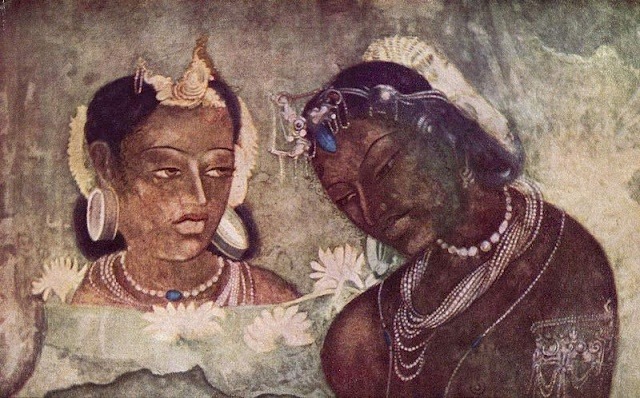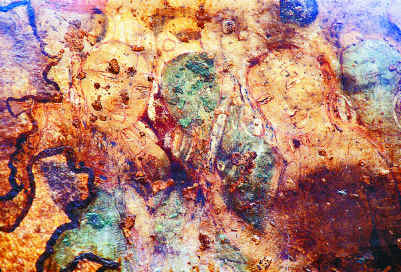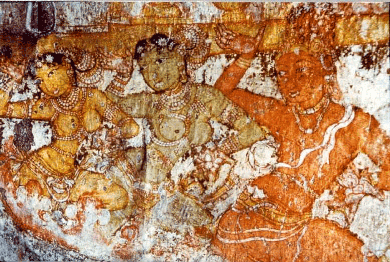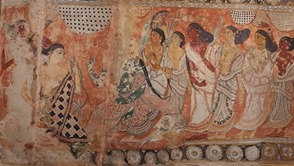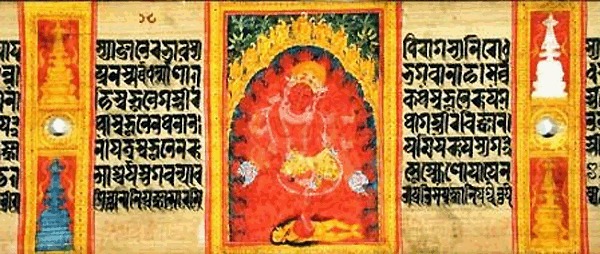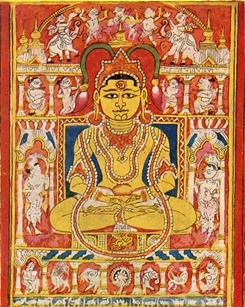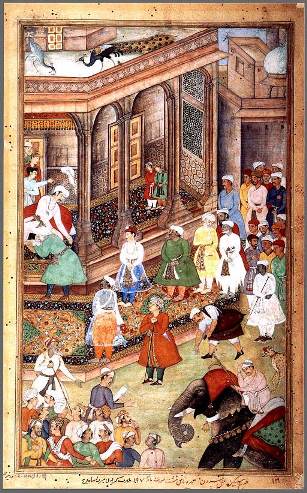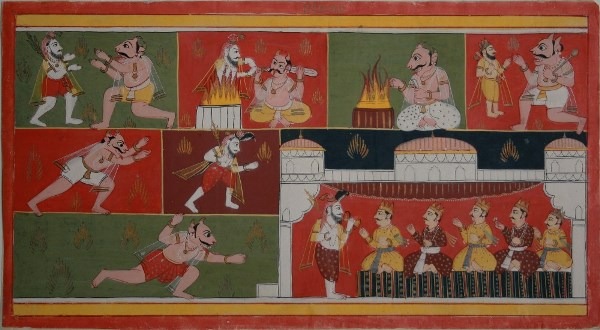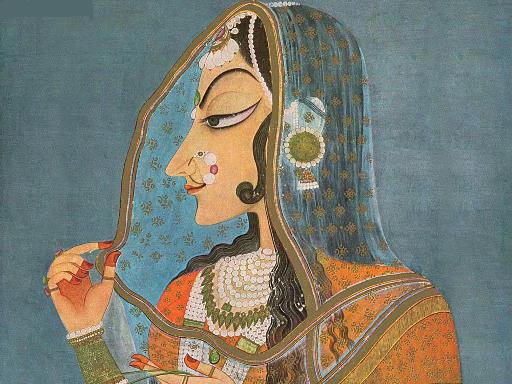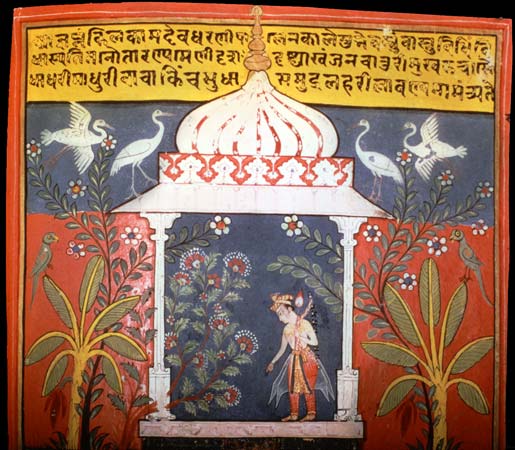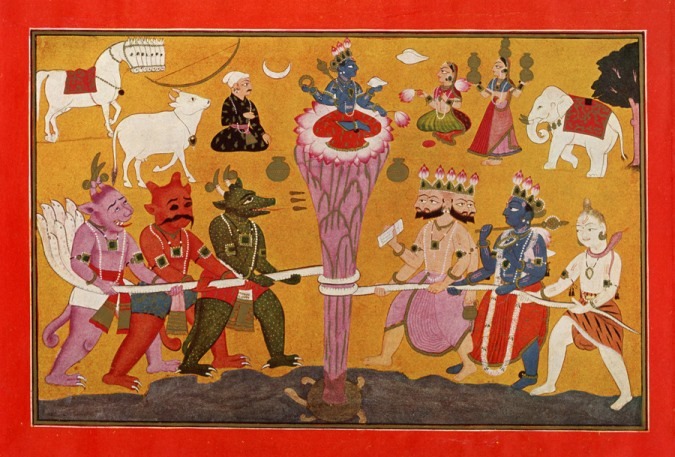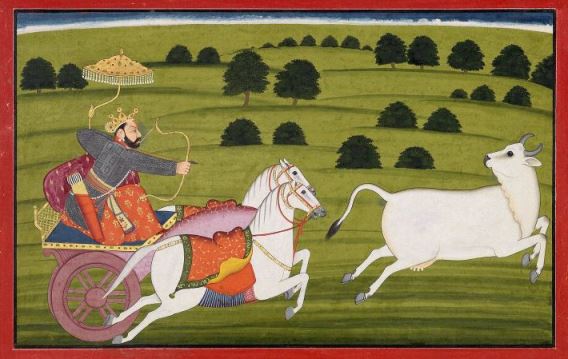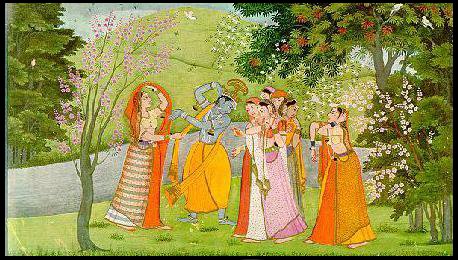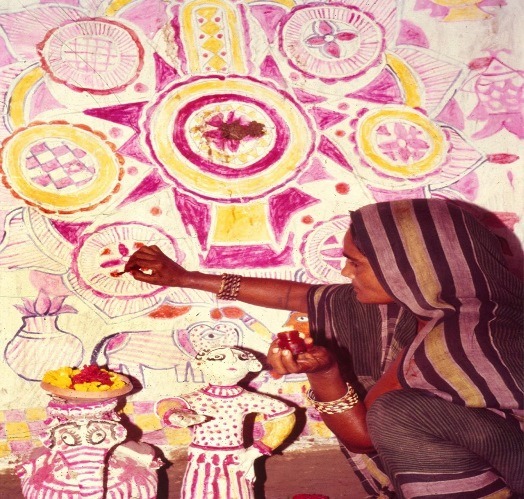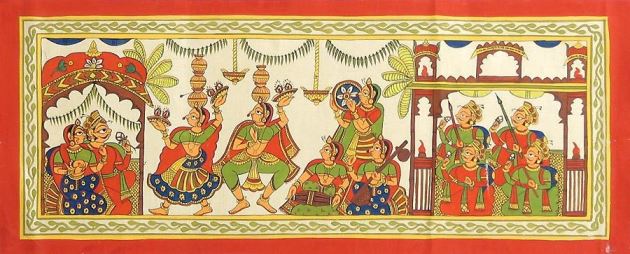14th Sept 2021
UPSC 2022 countdown has begun! Get your personal guidance plan now! (Click here)
Indian Festivals
| Kumbha Mela | Held at all 4 places every 3 years by rotation (Allahabad, Haridwar, Nashik, Ujjain) Associated rivers : Ganga at Haridwar, the Sangam of the Ganga, Yamuna and the mythical Saraswati at Allahabad, Godawari at Nashik, and Shipra at Ujjain Ardha Kumbh Mela : Haridwar and Prayag every 6 years Purna Kumbh Mela : Prayag every 12 years Maha Kumbh Mela : Prayag every 144 years |
| Holi | last full moon day of Phalguna |
| Maha Shivaratri | 13th night in Krishna Paksha of Phalguna |
| Navaratri | 9 forms of Shakti are worshipped on 9 nights |
| Vinayaga Chaturthi | On occasion of birth of Ganesha |
| Vasant Panchami | Worshiping Saraswati – the goddess of knowledge, music and art Children are taught to write their first words; Brahmins are fed ; ancestral worship is performed; the god of love- Kamadeva is worshipped People usually wear yellow garments |
| Ramzan | Muslims refrain from eating, drinking and sexual relations from dawn until sunset Intended to teach Muslims about patience, humility & spirituality |
| Guru Purnima | Buddhists in the honour of Lord Buddha who gave his first sermon on this day at Sarnath Hindus on this day offer Puja or pay respect to their Guru |
| Buddha Poornima | Birth anniversary of Lord Buddha |
| Christmas | Commemorate the birth of Jesus |
| Easter | Oldest and holiest Christian festival – the day when Jesus Christ was crucified On this day Jesus Christ rose from the dead and ascended into heaven |
| Thai Pongal | Harvest festival celebrated in Tamil Nadu, Puducherry and Sri Lanka To thank the Sun God and farmstead livestock Boiling of milk in clay pot symbolize material abundance for household |
| Muharram | Celebrated on the 1st month of the Islamic calendar unlawful to fight during this month |
| Dree Festival | an agricultural rite, which is observed by Apatanis in Arunachal Pradesh involves a sacrifice of fowls, eggs and animals to the sun & moon god to appease these Gods to avoid feminine |
Indian Dances
Indian Folk Music
- Baul : It is a type of Bengali music and a religious sect. The lyrics carry influence from Bhakti movement as well as Sufi movement.
- Wanawan : Folk music from Kashmir which is sung during wedding ceremonies.
- Padwani : This music is based on Mahabharata and uses both singing and playing instruments.
- Alha : Song is from Madhya Pradesh and is a heroic ballad song.
- Paani hari : Song is from the state of Rajasthan and is thematically related to water. Songs are generally about women fetching water from nearby well.
- Ovi : Maharashtra and Goan women sing such songs during leisure time.
- Pai song : Songs are mostly from Madhya Pradesh sung during festivals.
- Lavani : Popular folk song from Maharashtra. Music has a powerful rhythm and beats and is suitable for dancing.
- Maand : Developed in the royal circles
- Dandiya raas : Performed in Gujarat and is associated with Holi and Lila of Krishna and Radha at Vrindavan
- Powada : Folk type emerging from Maharashtra
- Khongjom Parva : Important folk music from the state of Manipur.
- Bhagwati : Popular amongst masses of Karnataka and Maharashtra. Musically they are close to ghazals and are sung on a slower pitch.
Classical Dances
The classical dance forms recognised by the Sangeet Natak Akademi and the Ministry of Culture are
- Bharatanatyam, from Tamil Nadu
- Kathak, from Uttar Pradesh and western India
- Kathakali, from Kerala
- Kuchipudi, from Andhra Pradesh
- Odissi, from Odisha
- Sattriya, from Assam
- Manipuri, from Manipur
- Mohiniyattam, from Kerala
Indian Music
The two main traditions of classical music in India are Carnatic music and Hindustani Music. Carnatic Music is found predominantly in the peninsular regions and Hindustani music are found in the northern and central regions.
Hindustani Music
Hindustani music was not only influenced by ancient Hindu musical traditions but also enriched by the Persian performance practices of the Mughals.
Dhrupad is an old style of Hindustani singing, traditionally performed by male singers. The great Indian musician Tansen sang in the Dhrupad style. Dhrupad was the main form of northern Indian classical music but has now given way to Khyal.
Khyal is a form of vocal music in Hindustani music. It was adopted from medieval Persian music It is special as it is based on improvising and expressing emotion.
Another vocal form Tarana are medium to fast-paced songs that are usually performed towards the end of the concert. They consist of a few lines of poetry with rhythmic syllables.
Tappa is a form of Indian semi-classical vocal music. It originated from the folk songs of the camel riders of Punjab and was developed as a form of classical music by Mian Ghulam Nabi Shori.
Thumri is a semi-classical vocal form said to have begun in Uttar Pradesh. The lyrics are typically in Brij Bhasha and are usually romantic.
Ghazal is an originally Persian form of Poetry. In India, Ghazal became the most common form of poetry in the Urdu language.
Although Hindustani music clearly is focused on vocal performance, recently instrumental Hindustani music is very popular than vocal music especially outside South Asia.
Carnatic Music
Carnatic music is a system of music commonly associated with the southern part of India especially. Andhra Pradesh, Karnataka, Kerala and Tamil Nadu. Carnatic music is completely melodic with improvised variations. Purandara Dasa is credited with having founded today’s Carnatic music. He is credited with having elevated Carnatic music from religious and devotional music into the realm of performing art. Carnatic music is usually performed by a small ensemble of musicians consist ing of a principal performer (vocalist ) a violin, mridanga ,and a tamburu. Today Carnatic music is presented by musicians in concerts or recordings either vocally or through instruments.
Important Indian Crafts
ZARI
- Zari is an even thread traditionally made offine gold or silver used in traditional Indian, Pakistani and Persian garments and curtains, etc. Four types of zari are produced in India, namely, real zari, semi real zari, imitation zari and plastic zari.
- Real zari is made of silver and electroplated with gold, whereas semi real zari has a composition of copper coated with silver and gold electroplating. Surat is the home of zari industry in India. Other clusters producing zari are Bareilly, Varanasi, Agra, Hyderabad, Lucknow, Vadodara, Lathur, Jaipur, Barmer, etc.
Coir Twisting
- Coir is a natural, eco-friendly, waterproof and exceptionally tensile fibre extracted from the nuts of coconut palms.
- It is found in abundance and is used for manufacturing a wide range of eco-friendly toys, mats, brushes, mattresses, wall hangings, key rings, pen stands and other home decoratives.
- This craft is primarily produced in Odisha (Sakhigopal, Puri, Pipli, Bhubaneswar, Batamangala and Kendrapara). It is also produced in Kerala (Ernakulam).
Folk Painting
- Indian folk paintings are pictorial expressions of village painters which are marked by the subjects chosen from epics like Ramayana and Mahabharata, Indian Puranas as well as daily events. There are several vibrant folk painting types in India in different stages.
- The Gond tribe of Madhya Pradesh is engaged in floor and wall painting. Warli is a vivid expression of daily and social events of Warli tribe in Maharashtra. Rajasthan is famous for Phad painting done on cloth.
- Other types of paintings arc Pilhora painting in Gujarat and Madhya Pradesh, Madhubani painting of Bihar, Chitrakar painting of West Bengal, Patachitras in Odisha, and Kalamkar Srikalahasti, Andhra Pradesh.
Metal Ware
- The metal crafts of India display intricate craftsmanship and fine art in shaping gold, silver, brass, copper into exquisitely designed images, idols, jewellery, and utility items. Different categories of handicrafts that come under metal ware are brass metalware of Moradabad, metal bidri work and bell metal in Madhya Pradesh, Odisha, and so on.
- India is the largest brassware producer in the world. Major clusters of brassware are Moradabad, Murshidabad, Madurai, Salem, Cuttack and Haryana.
- Bidriware is a metal handicraft that originatedinBidar, Karnataka. The term
‘Bidriware’ originates from the township of Bidar, which is still the main centre of the unique metalware. It is a form of encrusted metalware, where one metal is inlaid on to another. - Bidri products include a diverse range of objects including hukka bases, bowls, boxes, candle stands, trays, jewellery and buttons. It travelled from Iran to Ajmer in Rajasthan in the 13th century AD, and from there to Bijapur and flourished during the reign of the Deccan Sultanate.Itis also practised in Aurangabad district in the state of Maharashtra and Hyderabad in Andhra Pradesh. The basic metal used for Bidri is the alloy of zinc and copper.
Filigree and Silverware
- Filigree is an extremely ancient technique dating back to 4000 years ago. Filigree work is performed on silver and involves significant precision and technicality. Two major clusters of silver filigree in India are Karimnagar in Andhra Pradesh and Cuttack in Odisha.
- The practice in Karimnagar is about two centuries old. However, it is also practised in Warangal in Andhra Pradesh. Key raw materials used are silver wire, tracing sheet, copper, charcoal, dilute sulphuric acid.
Textile Hand Embroidery
- In textile hand embroidery, embellishment is made on fabric with threads and sometimes with other materials.
- There are many popular embroidery clusters such as chikankari and zardozi of Lucknow, katha of Bengal pulkari of Punjab. kutchi embroidery of Gujarat and kashidakari of Kashmir. Zardozi has been traditionally prevalent in Lucknow and the six surrounding districts ofBarabanki, Unnao, Sitapur, Rae Bareli, Hardoi and Amethi.
Textile Hand Printing
- Hand-printed textiles is a craft in which cloth is dyed with hand or printed using shapes. Various types of hand printing practiced in India are block printing, batik, kalamkari (hand printing by pen) and bandhani (tie and die).
- Some of the important centres of this craft are in Hyderabad, Machalipattnam, Varanasi, Farrukabad, Bagh, Behrongarh, Indore, Mandsar, Burhanpur, Ahmedabad, Rajkot, Kutch, Bagru, Chittroli, Sanganer, Jaipur and Jodhpur.
Indian Paintings
Prehistoric Cave Paintings
- Painted rock shelters by prehistoric cave dwellers
- Notable example → Bhimbetka caves in the Kaimur Range, MP (biggest prehistoric art depositoryin India)
Genres of Indian Painting
- Indian paintings can be broadly classified as murals and miniatures.
- Murals are large works executed on the walls of solid structures directly, as in the Ajanta Caves & Kailash temple (Ellora)
- Miniature paintings are executed on a very small scale for books or albums on perishable material such as paper and cloth.
Mural Paintings
- Mural is the only form of painting that is truly three-dimensional, since it modifies and partakes of a given space.
- Mural paintings are applied on dry wall with the major use of egg, yolk, oil, etc.
- Notable examples → Ajanta Caves, Bagh Caves, Sittanavasal Caves, Armamalai Cave (Tamil Nadu), Kailasa temple (Ellora Caves)
- Murals from this period depict mainly religious themes of Buddhist, Jain and Hindu
Ajanta Murals Paintings
- Depict a large number of incidents from the life of the Buddha (Jataka Tales)
- Exclusively Buddhist, excepting decorative patterns on the ceilings and the pillars.
Ellora Murals Paintings
- Painted in rectangular panels with thick borders with following
- Prominent features → Sharp twist of the head + painted angular bents of the arms + sharp projected nose + long drawn open eyes + concave curve of the close limbs
Badami Mural Paintings
- A cave site in Karnataka, patronized by chalukya king, Manglesha
- Depictions in the caves show Vaishnava affiliation, Therefore, the cave is popularly known as Vishnu cave.
Murals under the Pallava, Pandava and Cholas
- Paintings at the Kanchipuram temple were patronised by Pallava king, Rajsimha
- Paintings at Tirumalaipuram caves & Jaina caves at Sittanvasal were patronised by Padayas
- Paintings at Nartamalai & Brihadeswara temple were patronized by Cholas
Vijayanagara murals (13th century)
- Paintings at Virupaksha temple (Hamphi) & Lepakshi temple (Andhra Pradesh) were patronised by Vijayanagara Kings
Miniature Paintings
- The Palas of Bengal were the pioneers of miniature painting in India.
- The art of miniature painting reached its glory during the Mughal period.
The Pala School (11th – 12th century)
- Exist in the form of illustrations to the religious texts on Buddhism executed under the Palas of the eastern India & the Jain texts executed in western India
- The Buddhist monasteries of Nalanda, Odantapuri, Vikramsila & Somarupa were great centers of Buddhist learning and art.
- A large number of manuscripts on palm-leaf relating to the Buddhist themes were written, illustrated with the images of Buddhist deities at these centers
- The Pala painting is characterized by sinuous line and subdued tones of colour
Western Indian School of Painting
- Also called Jaina Painting, largely devoted to the illustration of Jaina religious texts of the 12th–16th century
- Notable sites → Gujrat, Uttar Pradesh, Central India & Orissa
- Characterized by simple, bright colours, highly conventionalized figures, and wiry, angular drawing
Mughal Paintings (16th – 19th century)
- Mainly confined to miniature illustrations on the books or as single works to be kept in an album
- Mughal paintings were a unique blend of Indian, Persian (Safavi) and Islamic styles
- Marked by supple naturalism → Primarily aristocratic and secular
- Tried to paint the classical ragas and Seasons or baramasa
- Tuti-nama – first art work of the Mughal School.
- Akbar’s reign (1556–1605) ushered a new era in Indian miniature painting.
- At Zenith under Jahangir who himself was a famous painter
- Jahangir encouraged artists to paint portraits and durbar scenes.
- Shah Jahan (1627–1658) continued the patronage of painting.
- Aurangzeb had no taste for fine arts.
- Most significant are Hamza Nama, Razm-Nama or “The Book of War”, Akbar Nama
- Finest example of this school includes Hamzanama series, started in 1567 & completed in 1582
- Hamzanama → Stories of Amir Hamza, illustrated by Mir Sayyid Ali
- 1200 paintings on themes of Changeznama, Zafarnama & Ramayana
- The paintings of the Hamzanama are of large size, 20” x 27″ and were painted on cloth.
- They are in the Persian safavi style with dominating colours being red, blue and green
- Indian tones appear in later work, when Indian artists were employed
Rajput Painting (16th – 19th century)
- the art of the independent Hindu feudal states in India
- Unlike Mughal paintings which were contemporary in style, Rajput paintings were traditional & romantic
- Rajput painting is further divided into Rajasthani painting and Pahari painting (art of the Himalayan kingdoms)
Central Indian and Rajasthani Schools (17th – 19th Century)
- Deeply rooted in the Indian traditions, taking inspiration from Indian epics, Puranas, love poems & Indian folk-lore
- Mughal artists of inferior merit who were no longer required by the Mughal Emperors, migrated to Rajasthan
Malwa paintings (17th century)
- Centred largely in Malwa and Bundelkhand (MP); sometimes referred as Central Indian painting due to its geographical distribution.
- This school’s most appealing features is its primitive charm & a simple childlike vision
Kishangarh paintings (18th century)
- Distinguished by its individualistic facial type and its religious intensity
- Developed under the patronage of Raja Savant Singh (1748-1757 AD) by master artist Nihal Chand
Mewar (Udaipur) Paintings (17th – 18th century)
- Characterized by bold bright contrasting colours and direct emotional appeal
- The earliest-dated examples come from Ragmala (musical modes) series painted in 1605
- Reflects portraiture & life of the ruler, along with religious themes
Marwar (Jodhpur) Paintings
- Executed in a primitive and vigorous folk style
- Completely uninfluenced by the Mughal style.
- Portrays court scenes, series of Ragamala & Baramasa
Bundi paintings (Late 17th century)
- Very close to the Mewar style, but the former excels the latter in quality
- Prominent features → Rich and glowing colours, the rising sun in golden colour, crimson-red horizon, border in brilliant red colour (in Rasikpriya series)
- Notable examples → Bhairavi Ragini (Allahabad Museum), illustrated manuscript of the Bhagawata Purana (Kota Museum) & a series of the Rasikapriya (National Museum, Delhi)
Kota paintings (18th – 19th century)
- Very similar to Bundi style of paintings
- Themes of tiger and bear hunt were popular
- Most of the space in painting is occupied by the hilly jungle
The Pahari Schools (17th – 19th Century)
Comprises the present State of Himachal Pradesh, some adjoining areas of the Punjab, the area of Jammu, & Garhwal in Uttarakhand
Basohli Paintings (17th – 18th century)
- known for its bold vitality of colour, lines & red borders
- Emotional scenes from a text called “Rasamanjari” → Krishna legend
- Favoured oblong format, with the picture space usually delineated by architectural detail, which often breaks into the characteristic red borders
- Stylized facial type, shown in profile, is dominated by the large, intense eyes
Guler painting (Jammu)
- Mainly consisting of portraits of Raja Balwant Singh of Jasrota (Jammu) designed by Nainsukh
- Colours used are soft and cool unlike Basohli school
- Style appears to have been inspired by the naturalistic style of the Mughal painting
Kangra painting (Late 18th century)
- The Kangra style is developed out of the Guler style & possesses its main characteristics, like the delicacy of drawing & naturalism
- The Kangra style continued to flourish at various places namely Kangra, GuIer, Basohli, Chamba, Jammu, Nurpur and Garhwal etc.
- However, Named as Kangra style as they are identical in style to the portraits of Raja Sansar Chand of Kangra
- In these paintings, the faces of women in profile have the nose almost in line with the forehead, the eyes are long & narrow, & chin is sharp.
- There is, however, no modelling of figures and hair is treated as a flat mass.
- Paintings of the Kangra style are attributed mainly to the Nainsukh family.
Kullu – Mandi painting
- A folk style of painting in the Kulu-Mandi area, mainly inspired by the local tradition
- The style is marked by bold drawing and the use of dark and dull colours
Independent Paintings
Kalighat Paintings (Kolkata – 19th century)
- Patua painters from rural Bengal came and settled in Kalighat to make images of gods and goddesses in the early 19th century
- They evolved a quick method of painting on mill-made paper
- Used brush and ink from the lampblack
Madhubani Paintings (Mithila – Bihar)
- Colorful auspicious images on the interior walls of homes on the occasion of rituals & festivity → painted by women
- This ancient tradition, especially elaborated for marriages, continues today.
- Used to paint the walls of room, known as KOHBAR GHAR in which the newly wedded couple meets for the first time
- Very conceptual, first, the painter thinks & then “draws her thought”
Phad paintings (Bhilwada, Rajasthan)
- Phad is a painted scroll, which depicts stories of epic dimensions about local deities and legendary heroes.
- Bhopas (local priests) carry these scrolls on their shoulders from village to village for a performance.
- Represents the moving shrine of the deity and is an object of worship
- Most popular & largest Phad – local deities Devnarayanji and Pabuji
Kalamkari Paintings (Andhra Pradesh)
- Literal meaning is painting done by kalam (pen) , Mainly in Andhra Pradesh (developed under Vijaynagar rulers)
- Stories from the epics Ramayana, Mahabharata and the Puranas are painted as continuous narratives
- Mainly to decorate temple interiors with painted cloth panels scene after scene; Every scene is surrounded by floral decorative patterns
Warli painting
- Practiced in tribal regions of Maharashtra with subjects, predominantly religious
- decorative paintings on floors & walls of ‘gond’ and ‘kol’ tribes homes and places of worship
- made in a geometric patterns like squares, triangles, and circles
- Unlike other tribal art forms, Warli paintings do not employ religious iconography and is a more secular art form.
Handicrafts
| Kashmir | Embroidered shawls, carpets, namdar silk and walnut wood furniture |
| Rajasthan | precious stone and jems + tie & dye (Bandhani) fabric + minakari work |
| Andhra Pradesh | Bidri work and Pochampad saris |
| Tamil Nadu | bronze sculpture and Kajeevaram silk saris |
| Mysore | silk, sandalwood items |
| Kerala | ivory carvings and rosewood furniture |
| Assam | cane furniture |
| Bengal | Bankura terracotta modelling and handloom items |
| Benaras | Brocade & silk saris |
| Madhya Pradesh | Chanderi and kosa silk |
| Lucknow | chikan work (Zardozi Embroidery – Muslims in Lucknow) |
| Punjab | Phulkari embroidery |
| Bengal | Kantha embroidery |
| Orissa | Patola embroidery |
| Budhhists | Thangka painting |
Samanvaya: Free 1-to-1 mentorship for UPSC IAS
Fill up this form to schedule a free on-call discussion with senior mentor from Civilsdaily. Once submitted we will call you within 24 hours.
